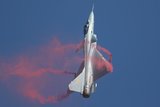Chinese shipbuilder launches ‘combat-ready’ JARI USV
The No. 716 Research Institute of the China Shipbuilding Industry Corporation (CSIC) launched a long-awaited USV on 21 August, according to an announcement on the …
The Chinese People’s Liberation Army Navy (PLAN) focus as stated by China’s latest Defence White Paper is to build a strong and modernised naval force which will provide defence of the near seas and protection missions on the far seas.
Already have an account? Log in

The No. 716 Research Institute of the China Shipbuilding Industry Corporation (CSIC) launched a long-awaited USV on 21 August, according to an announcement on the …

If Beijing’s leaders and its numerous mouthpieces are to be believed, China is a friendly and cuddly panda intent on holding the world together. Then …

Asian countries continue to enhance their satellite constellations, with China, India and South Korea all making recent announcements in the space realm. China, for instance, …

In possession of the second largest defence budget in the world, the Chinese People’s Liberation Army (PLA) is in the midst of reforming its personnel, …

China’s shifting focus from traditional security concerns to global power competition has brought along changes in People’s Liberation Army Air Force’s (PLAAF) strategic mission.

Norinco’s VT5 light tank, a platform dedicated to the export market, is set to receive a hard-kill active protection system (APS). Such a system detects …